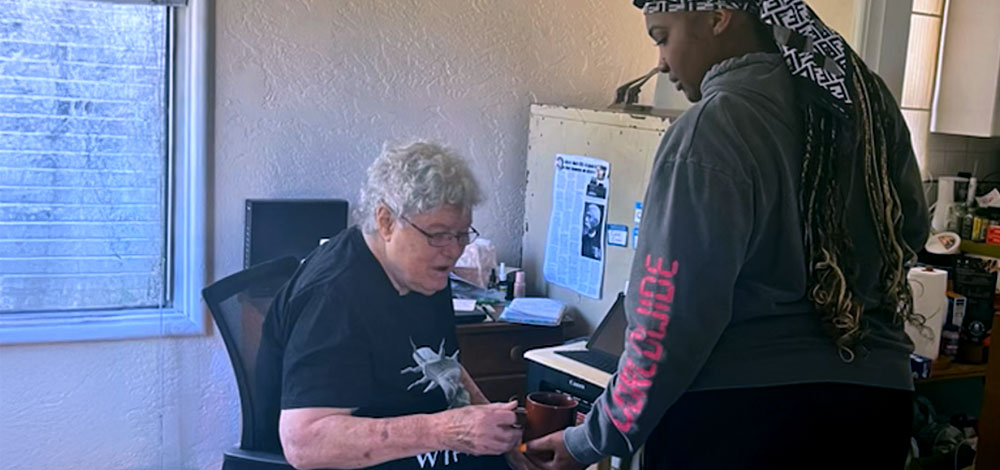Projects to integrate palliative care into the care provided by clinicians in a partner service line are more likely to be effective when they are:
- Developed through collaboration of clinicians and leaders in the partner service line and specialty palliative care
- Focused on a specific quality gap, and a specific group of clinicians whose behavior is being changed in order to close that gap
- Based on the factors that predispose, enable, and reinforce clinicians to perform recommended behaviors in the context in which they work
This needs assessment toolkit is a structured assessment process that includes instructions and tools that organizations can use to plan projects focused on generalist palliative care. The following needs assessment resources are based on the experiences of 10 California public health care systems that participated in a California Health Care Foundation (CHCF) initiative in 2018–19 to plan generalist palliative care interventions. In that initiative, this six-step process took about eight months; descriptions below reflect that time frame, which could be adjusted based on local needs and resources.
Needs Assessment Process Map

Note that the needs assessment process is iterative, and may involve moving back and forth between the steps and adjusting as needed. We recommend identifying two co-advisers to lead the assessment: a clinician or administrator from the palliative care service and a clinician or administrator from a partner service line or organization, such as surgery, the emergency department, primary care, or a community organization.
- Find a Partner and Assess Needs
- Identify Quality Gaps
- Target Audience and Behavior
- Predisposing, Enabling, and Reinforcing Factors
- Brainstorm Possible Interventions
- Select a Set of Interventions
1. Find a Partner and Assess Needs
In the first assessment step (one to two months), a partner service line is selected, and a palliative care specialist and a champion from the partner service line are designated as “co-advisers” for the needs assessment. These co-advisers reflect on initial needs and quality gaps and interview stakeholders in the partner service line to elicit their perspectives on key needs.
To begin the assessment process:
- Identify a service line or organization that wishes to partner with palliative care to learn about the needs of their seriously ill patients and to integrate palliative care processes into routine care.
- Identify a palliative care champion (clinician or administrator) from that service line or organization who can serve as an adviser on the needs assessment along with a palliative care specialist.
- Identify a member of the palliative care team (clinician or administrator) to partner with the partner service line adviser.
Tip: Co-advisers should be able to devote about four hours per month for about eight months to the needs assessment process.
Resources and Tools
Watch this 35-minute webinar segment, “Clinical Practice Guidelines for Quality Palliative Care, 4th edition,” for an introduction to palliative care, including definitions, key concepts, domains, quality guidelines, and practice examples. (Presenter: Betty Ferrell, PhD, MA, FAAN, FPCN, cochair, National Consensus Project Steering Committee; Dec. 2018; slides [PDF])
Use the Co-adviser Discussion Guide #1 (PDF) to guide an initial discussion between co-advisers focusing on advisers’ experiences and key palliative care needs for patients in the partner service line.
Use the Round 1 Stakeholder Interview Guide (PDF) to plan a first round of interviews with key stakeholders — including clinicians, leaders, patients, and/or families — to gather their perspectives on key needs.
2. Identify Quality Gaps
In this step (one month), the co-advisers reflect on their own experiences and their stakeholder interviews and refer to national guidelines to identify palliative care quality gaps commonly experienced by patients in the partner service line.
Resources and Tools
Use the Co-adviser Discussion Guide #2 (PDF) for a co-adviser meeting to identify possible quality gaps that warrant further assessment.
Refer to the National Consensus Project (NCP) Guidelines for Quality Palliative Care (PDF) and map identified gaps to NCP domains.
Tip: Start with these sections in each domain:
- Essential Palliative Care Skills Needed by All Clinicians: Outlines generalist palliative care skills for that domain.
- Practice Examples: Practical ideas for how guidelines can support improvement work across a variety of care settings.
Watch this 12-minute webinar clip, “Needs Assessment Challenges,” for discussion of commonly encountered challenges in needs assessment and how to navigate them. (Presenter: Monique Parrish, DrPH, MPH, LCSW, LifeCourse Strategies; Feb. 2019; slides [PDF])
3. Target Audience and Behavior
The next step (one month) is to choose a quality gap on which to focus further assessment, and to identify a target audience whose behavior an educational and/or quality improvement project will aim to change.
Resources and Tools
Watch this 10-minute webinar clip, “Selecting a Quality Gap,” which outlines criteria to consider when selecting a quality gap for further assessment out of those identified in the prior step. (Presenter: Kathleen Kerr, BA, Kerr Healthcare Analytics; Jan. 2019; slides [PDF])
Use the Co-adviser Discussion Guide #3 (PDF) to support a co-adviser meeting to choose a gap to focus on for further assessment and to identify your target audience and behavior.
4. Predisposing, Enabling, and Reinforcing Factors
In this step (one to two months), the co-advisers do a deep dive to understand factors that predispose, enable, and reinforce a target audience to perform a target behavior.
Tip: Understanding factors that predispose, enable, and reinforce your target audience to perform a target behavior helps you plan an intervention that will stick.
Resources and Tools
Watch this 9-minute webinar clip, “Predisposing, Enabling, Reinforcing Factors (PER) Worksheet,” for an introduction to the PER worksheet, how to complete it, and how it can help to plan primary palliative care interventions. (Presenter: Wendy Anderson, MD, MS, associate professor, University of California, San Francisco; Feb. 2019; slides [PDF])
Use the Co-adviser Discussion Guide #4 (PDF) to support a co-adviser meeting that includes completing a draft of a PER worksheet and planning Round 2 stakeholder interviews.
Use the Round 2 Stakeholder Interview Guide (PDF) to plan the second round of stakeholder interviews, which will be with members of your target audience.
Read more about the PER worksheet: Marietta A. Langlois and Jeffrey S. Hallam, “Integrating Multiple Health Behavior Theories into Program Planning: The PER Worksheet,” Health Promotion Practice 11, no. 2 (Mar. 2010): 282–8.
5. Brainstorm Possible Interventions
In this step (one month), co-advisers:
- Identify educational needs (attitudes, knowledge, skills) of the target audience from the completed Predisposing, Enabling, Reinforcing (PER) worksheet
- Brainstorm other ways to support the target audience in performing the target behavior, using the completed PER worksheet
- Identify existing palliative care curricula and tools to support the project
Resources and Tools
Watch this 7-minute webinar clip, “An Overview of Primary Palliative Care Interventions,” including translating evidence into practice; multilevel, multicomponent interventions; and tailoring interventions to a new context. (Presenter: Wendy Anderson, MD, MS, associate professor, University of California, San Francisco; Apr. 2019; slides [PDF])
Watch this 9-minute webinar clip, “Lessons Learned: SF Health Network,” describing a needs assessment of primary palliative care in the San Francisco Health Network and how initial interventions were planned and implemented. (Presenter: Anne Kinderman, MD, director, Supportive and Palliative Care Service, Zuckerberg San Francisco General Hospital; Apr. 2019; slides [PDF])
Use the Co-adviser Discussion Guide #5 (PDF) to support a co-adviser meeting to brainstorm possible interventions, using the completed PER worksheet.
Review the Resource Guide (PDF) to identify existing palliative care curricula and tools you can use in your project.
6. Select a Set of Interventions
In the final step of the needs assessment (one month), the needs assessment team selects feasible sets of interventions to take forward, identifies needed resources, and plans how to assess impact.
Tip: The completed Predisposing, Enabling, Reinforcing (PER) worksheet helps identify how you could use multiple approaches to increase the likelihood that your target audience will perform your target behavior. Using multiple approaches makes it more likely that you’ll see the results you want.
Resources and Tools
Watch this 30-minute webinar clip, “Planning and Implementing Interventions,” for an overview of key considerations in rolling out planned interventions. (Presenter: Michael Rabow, MD, professor, University of California, San Francisco; Apr. 2019; slides [PDF])
Use the Co-adviser Discussion Guide #6 (PDF) to support a co-adviser meeting in which you solidify two intervention ideas, discuss evaluation, and outline the needed resources.
Videos: Webinar Clips
Each section of the Needs Assessment Toolkit above contains a link to a video designed to help organizations assess needs and opportunities for providing generalist palliative care for people with serious illnesses.
You can view all seven of these videos without leaving this page. Use the scroll bar on the right-hand side of the player window to access all seven videos.




